Architecture and Film 2005 - Zero Gravity in Film
Airports, Infrastructure and Transportation |
|
|
|
"The terminal, concourses are the agoras of the future city, time-free zones where all the clocks of the world are displayed, an atlas of arrivals and destinations forever updating itself where we briefly become true world citizens." |
|
| - J.G. Ballard quoted in Supermodernism p. 80-83 | |
In Star Wars it seems transportation has evolved to the degree where all citizens are world citizens, where cities can evolve to encompass whole planets. With the ability for intergalactic travel comes "the universal citizen," one connected not only to his/her own world, but to many other worlds and many other species. This increase in travel requires an increase in infrastructure, and a greater amount of urban area devoted to transportation. |
|
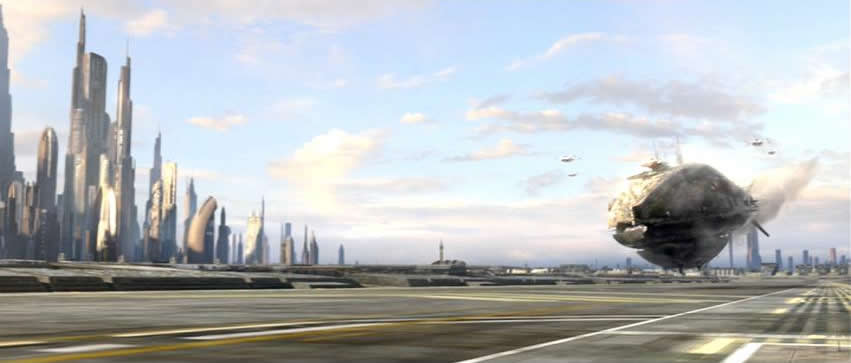 |
|
An urban runway on Coruscant |
|
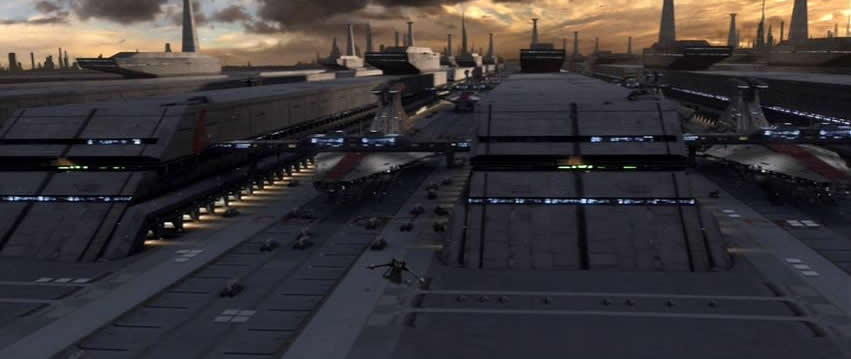 |
|
A smaller scale runway |
|
Whether on the planet of the Imperial City, or the smaller, more secluded Wookiee world of Kashyyyk, Lucas presents airports, or space-ports, as a tremendously important urban infrastructure to these worlds. |
|
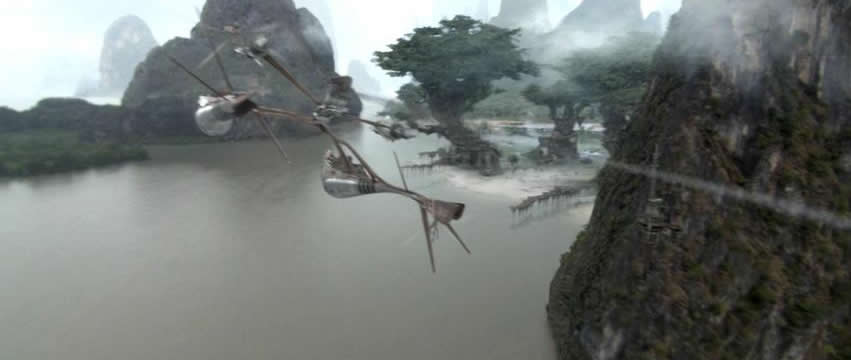 |
|
The first view of Kashyyyk, from the air |
|
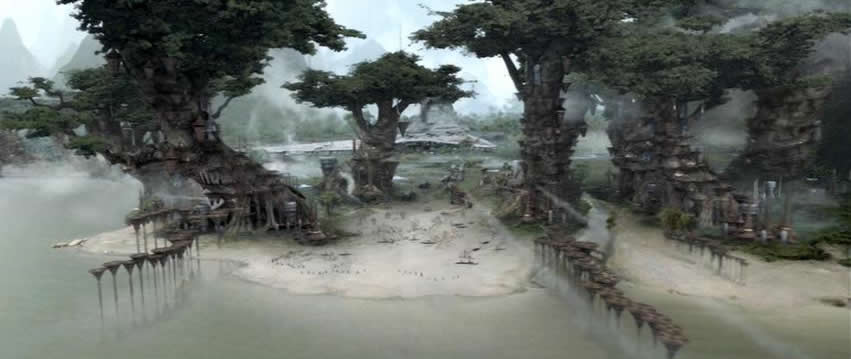 |
|
The Kashyyyk 'airport' |
|
Another necessary infrastructure with an increase in both inter-planetary and intra-planetary vehicular travel is the requirement for parking. Greater parking area is allowed in that the third, Z-dimension may be used as in stacked parking. However, this increase in verticality also requires greater vertical connections internally in buildings. |
|
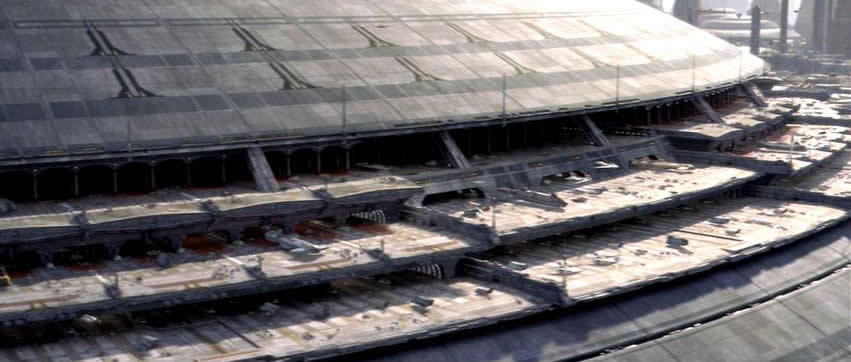 |
|
Parking pads surrounding the senate on Coruscant |
|
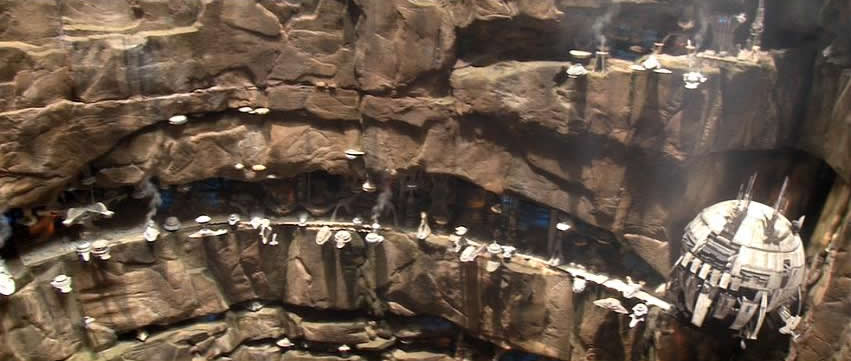 |
|
The interor of a sinkhole on Utapau, lined with parked ships |
|
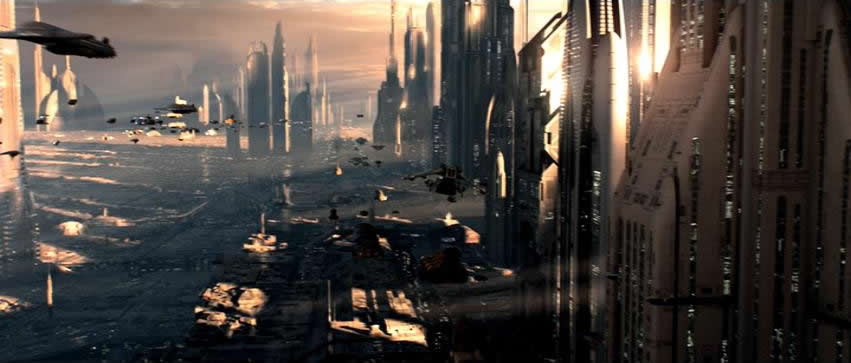 |
|
Movement of traffic expanded by vertical layering |
|
Beyond merely allowing for greater infrastructures, the architecture also can play a key role in the plot, as Obi-Wan Kenobi captures Count Dooku by the space-aged equivalent of crawing through the air ducts. |
|
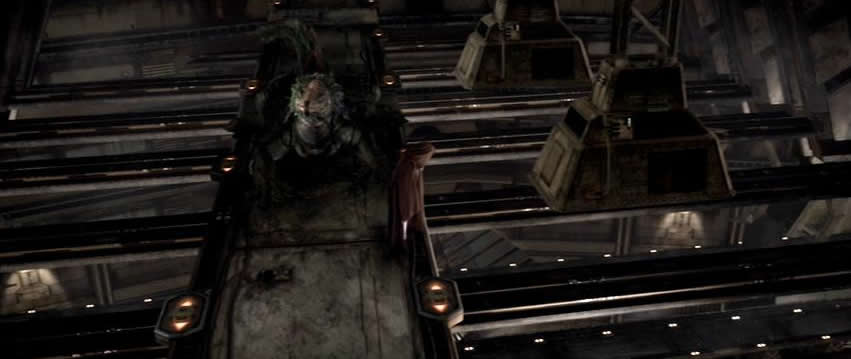 |
|
Service systems play a key role in the confrontation with Count Dooku on Utapau |
|
Return to Environments in Zero Gravity Main Page
Final Term Project - ARCH 443: Architecture and Film - Zero Gravity in Film - Fall 2005 - Emily Maemura